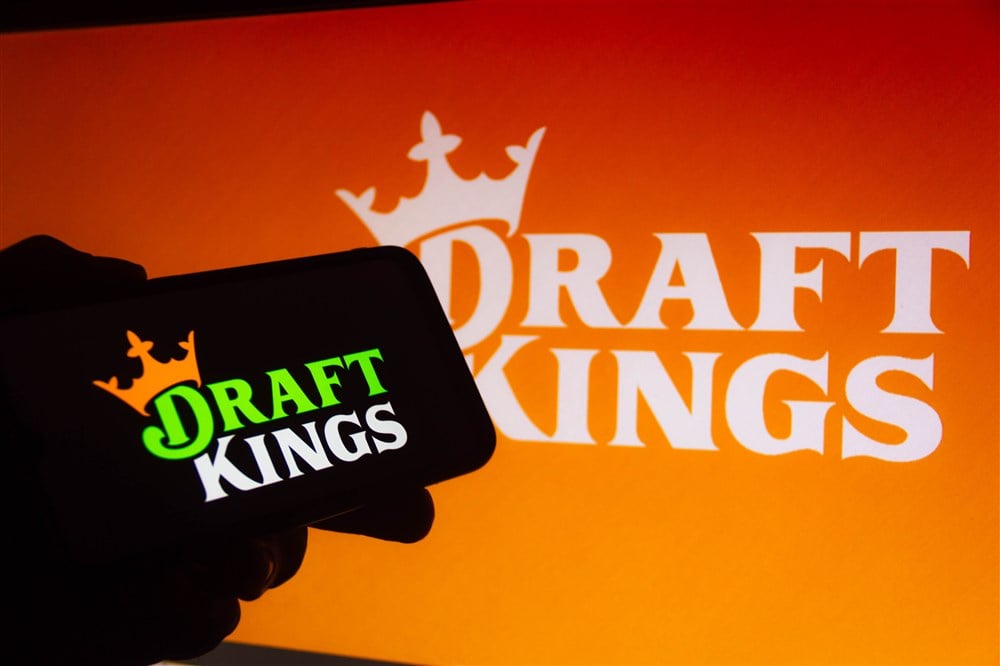
Online sports betting company DraftKings Inc. (NASDAQ: DKNG) is forming a bullish base below an early August high of $34.49, as you can see on MarketBeat's DraftKings chart.
The stock has been one of the 2023 heroes, advancing 143.37% year-to-date, although its current base means it's posted a three-month decline of 10.15%.
The increased pace of online gaming legalization in the U.S. is a contributing factor to revenue growth. At the same time, the company is focused on operating efficiencies on its path to profitability.
Potentially Early Entry Points
While $34.49 is the traditional buy point, investors with a more aggressive approach could potentially use a September 11 high of $32.65 as an early entry opportunity, as well as the October 11 high of $31.10.
Make no mistake: That approach using multiple buy points is only viable with a stock like DraftKings that's performing well. You wouldn't try that with a poor performer that you're trying to scoop up at a bargain, hoping against hope that the stock will rise.
DraftKings stock is currently trading below its 50-day moving average, but that has more to do with the broad market pullback rather than intrinsic weakness in the stock.
For example, MarketBeat's DraftKings earnings show the company has been growing year-over-year revenue at double-digit rates.
The stock's uptrend, which began in January, topped out in August as Penn Entertainment Inc. (NASDAQ: PENN) announced that it was teaming up with Walt Disney Co.'s (NYSE: DIS) ESPN to rebrand its sportsbook as ESPN BET.
DraftKings stock initially gapped down on the news, but so far, its peak-to-trough correction has been 26%, and the stock is holding above its August 18 low of $25.41.
Wall Street Bullish About the Stock
That's a signal that Wall Street isn't panicking about the Penn-ESPN deal and still has conviction about DraftKings.
For more proof, take a look at MarketBeat's DraftKings analyst ratings, which show a consensus view of "moderate buy." Analysts' price target is $34.28, an upside of 26.62%.
DraftKings is one of those mid-cap stocks that are well known to the public, similar to retailers. In no small part that's due to the company's nationwide TV commercials, but also because it's a popular site among consumers.
DraftKings operates both online and in-person sportsbooks, an online casino called iGaming, daily fantasy sports contests and an NFT marketplace. Other sources of revenue include advertising, and online sports betting and gaming software services.
In a second-quarter business update, issued in early August, DraftKings said its revenue growth trajectory is strong, and the company's continued focus on its online sportsbook and iGaming products, along with an enhanced customer experience, is "driving excellent retention and rapidly improving monetization."
DraftKings Boosted Revenue Guidance
Year-over-year revenue grew by 88% in the second quarter. The company boosted its revenue guidance, anticipating approximately 56% revenue growth for the full year.
The company is not yet profitable, which is not unusual for a company still fairly new to the public markets. The company merged with a SPAC, Diamond Eagle Acquisition Corp., in April 2020, just in time to benefit from people staying home and looking for activities.
DraftKings' three-year revenue growth rate is an extraordinarily high 95%, and the analyst ratings indicate more optimism about that growth.
Analysts See Losses Narrowing
The company's losses narrowed in 2021 and 2022, and analysts expect that trend to continue this year and next.
In its second-quarter business update, DraftKings accelerated its timeline to profitability by delivering positive adjusted earnings of $73 million in the quarter, before interest, taxes, depreciation and amortization. That compares to an EBITDA loss of $118 million in the year-earlier quarter.
As more states legalize online gambling, and more of those launch dates are now in sight, DraftKings said it expects "to generate meaningfully positive adjusted EBITDA for full-year 2024 as revenue continues to grow, adjusted gross margin rate expands, and fixed costs increase at a modest year-over-year rate."













